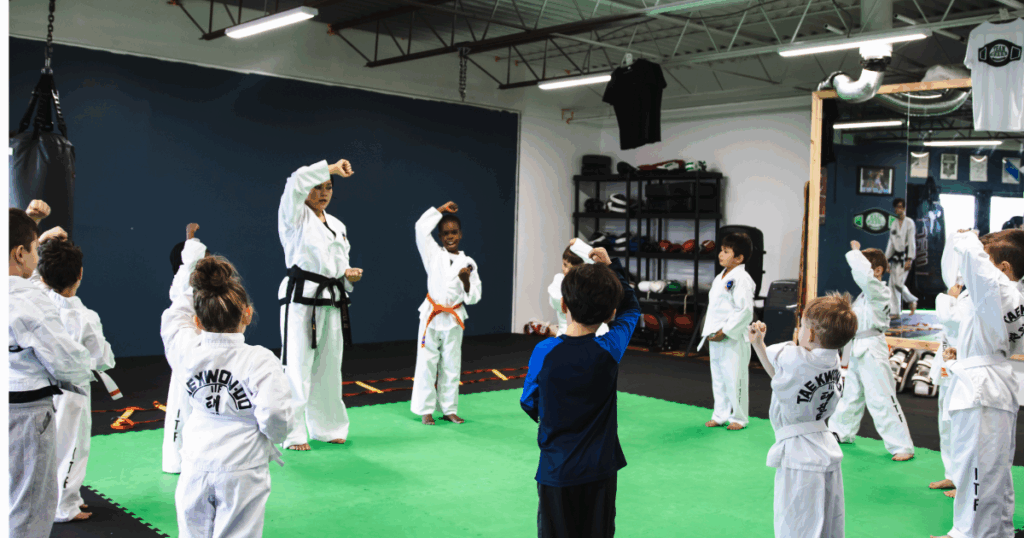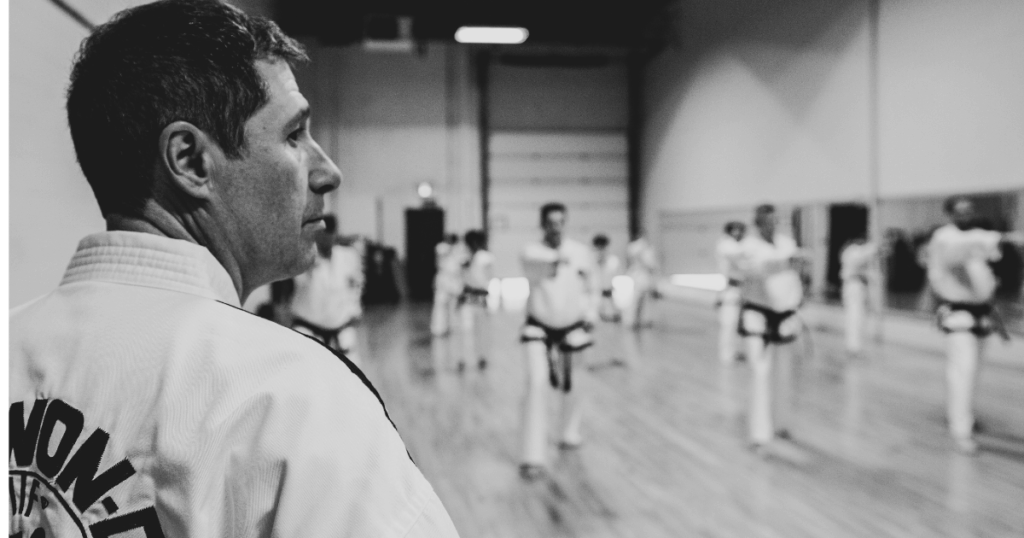Introduction
Taekwon-do is more than just powerful kicks and lightning-fast strikes—it is a martial art built on precision, discipline, and tradition. One of the most important aspects of Taekwon-do training is patterns, known as Tul in Korean. Patterns are choreographed sequences of movements that combine blocks, strikes, stances, and kicks, performed against imaginary opponents. For students at all levels, mastering patterns provides the foundation for technical ability, self-discipline, and mental focus.
Whether you are a beginner stepping onto the mat for the first time or a black belt refining advanced sequences, this guide will walk you through the fundamentals of Taekwon-do patterns, their purpose, and practical tips to improve your practice.
What Are Taekwon-do Patterns?
Patterns are structured sets of movements that simulate real-life combat scenarios. Each movement represents a defensive or offensive action against one or more imaginary attackers.
Why Patterns Matter:
- Muscle Memory – Repetition develops automatic responses in sparring and self-defense.
- Balance and Coordination – Shifting stances and techniques in sequence improves body control.
- Discipline and Focus – Each pattern requires concentration and attention to detail.
- Cultural Tradition – Patterns honor Taekwon-do’s history and philosophical teachings.
For beginners, the first few patterns may feel challenging, but they lay the groundwork for all future training.

The Purpose Behind Patterns
Patterns are not just a physical workout—they represent the philosophy and spirit of Taekwon-do. Each one tells a story, often named after important figures or events in Korean history.
For example:
- Chon-Ji (the first full pattern) means “Heaven and Earth,” symbolizing the beginning of all things.
- Dan-Gun honors a legendary founder of Korea.
- Toi-Gye represents a great Confucian scholar.
By practicing these sequences, students connect not only with martial arts skills but also with values like respect, perseverance, and honor.
Beginner Taekwon-do Patterns
If you’re new to Taekwon-do, here are the first patterns you’ll encounter in most International Taekwon-do Federation (ITF) schools:
- Saju Jirugi (Four-Directional Punch) – Focuses on strong punches while maintaining balance.
- Saju Makgi (Four-Directional Block) – Builds hand-eye coordination and introduces basic defensive movements.
- Chon-Ji – The first complete pattern, with 19 movements combining blocks and strikes.
Tips for Beginners:
- Start Slowly – Learn movements step by step before building speed.
- Focus on Form – Clean technique matters more than power at this stage.
- Use Mirrors or Video – Watching yourself helps refine stances and posture.
Advancing Through Patterns
As students progress in Taekwon-do, the patterns become longer, more complex, and physically demanding. Intermediate and advanced patterns introduce kicking combinations, turning motions, and multi-directional defenses.
- Intermediate Patterns – Include movements like fast kicks, side kicks, and combinations that require agility.
- Advanced Patterns – May exceed 40 movements and demand precise breathing control, timing, and explosive power.
Each belt level builds on the one before, creating a structured pathway from beginner to black belt.
Common Mistakes Students Make
Even motivated students sometimes develop habits that hold them back. Here are the most frequent mistakes and how to correct them:
- Rushing Through Movements – Slow down and focus on accuracy.
- Overextending Kicks or Strikes – Keep techniques within controlled ranges.
- Poor Breathing – Exhale on strikes and blocks to maintain rhythm and power.
- Lack of Balance – Strengthen your core and stances to stay stable.
- Skipping Practice – Patterns require repetition; consistency builds confidence.
How to Practice Patterns Effectively
Improving your patterns takes patience and strategy. Try these proven training methods:
- Break Down Each Step – Practice sections of the pattern before putting it all together.
- Shadow Practice – Visualize an opponent for better realism.
- Use Targets or Pads – Build accuracy and striking power.
- Seek Feedback – Ask instructors for corrections and apply them immediately.
- Consistency Over Time – Dedicate 10–15 minutes daily to pattern practice.
Patterns and Sparring: The Connection
Some students wonder, “Why practice patterns if I want to spar?” The answer: patterns prepare you for sparring success.
- Blocks and strikes in patterns develop reflexes used in live combat.
- Footwork builds agility, helping you move quickly around opponents.
- Patterns sharpen mental focus, essential for anticipating an opponent’s moves.
In short, the discipline of patterns directly translates into sparring performance and real-world self-defense.
Benefits Beyond the Dojang
Mastering Taekwon-do patterns doesn’t just help you in martial arts—it improves everyday life:
- Confidence – Progressing through belt levels boosts self-esteem.
- Mental Clarity – Focused practice sharpens your concentration at school or work.
- Fitness – Patterns provide a full-body workout, improving strength and endurance.
- Stress Relief – The rhythmic flow of techniques has a meditative effect, reducing stress.
At Phoenix Martial Arts, we’ve seen countless students grow stronger mentally and physically through their dedication to patterns.
Practical Training Tips from Phoenix Martial Arts
Drawing on decades of teaching experience:
- Attend Pattern-Specific Classes – Many Taekwon-do schools, including ours, offer focused sessions just for pattern practice.
- Pair Up with Partners – Practice together to refine timing and rhythm.
- Use Visualization – Imagine the opponents as real to make your movements sharper.
- Set Milestones – Track progress with belt tests and personal goals.
Conclusion
Patterns are the backbone of Taekwon-do training. They teach more than physical movements—they instill discipline, balance, focus, and respect. By mastering the fundamentals, students build a strong foundation that supports their journey toward black belt and beyond.
At Phoenix Martial Arts Club, we encourage every student to embrace patterns not as a chore, but as a gateway to mastery. With patience, persistence, and proper guidance, patterns will sharpen your skills, strengthen your confidence, and deepen your connection to the art of Taekwon-do.
Ready to start mastering patterns? Join us at one of our Alberta locations to train with expert instructors and take the first step toward martial arts excellence.

